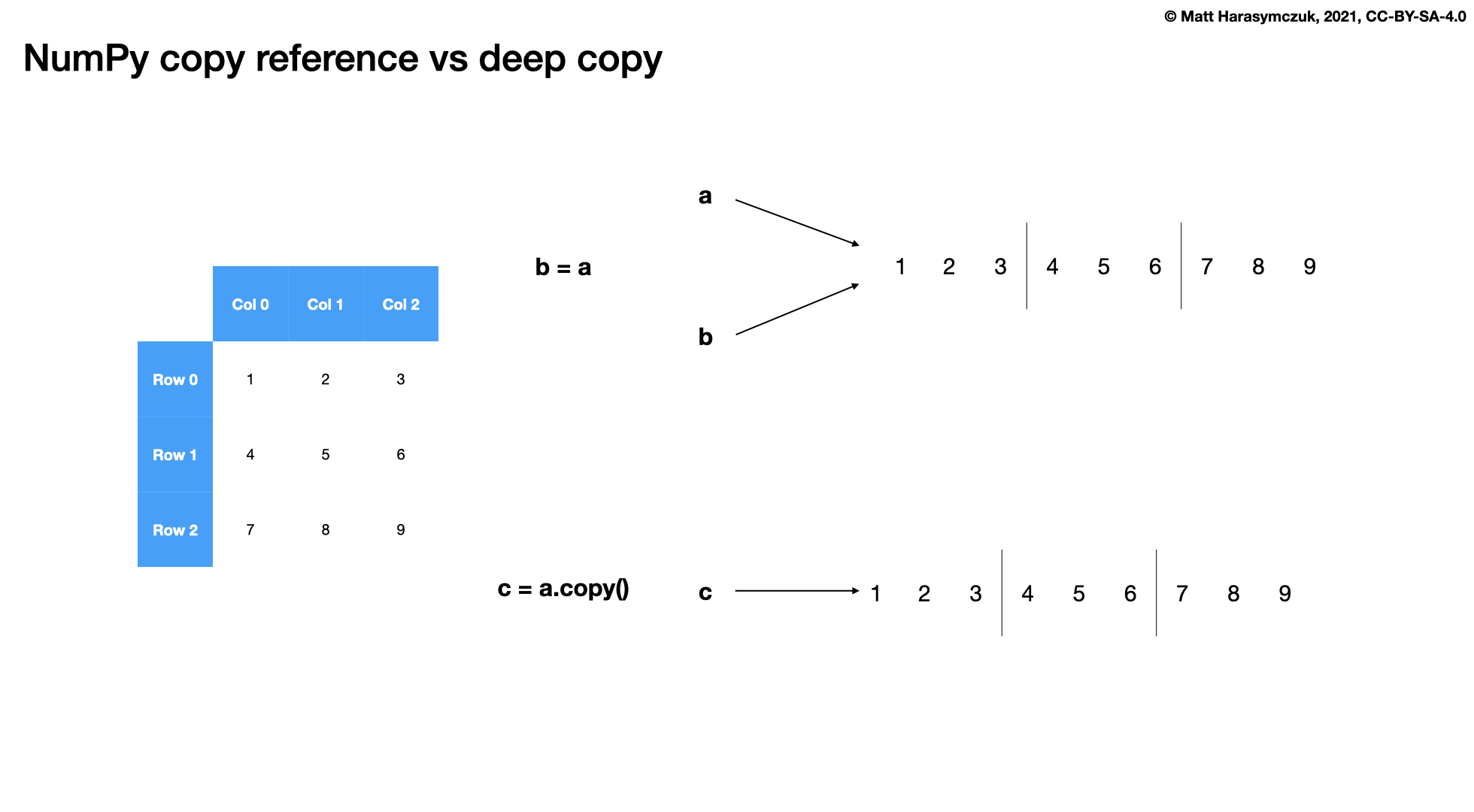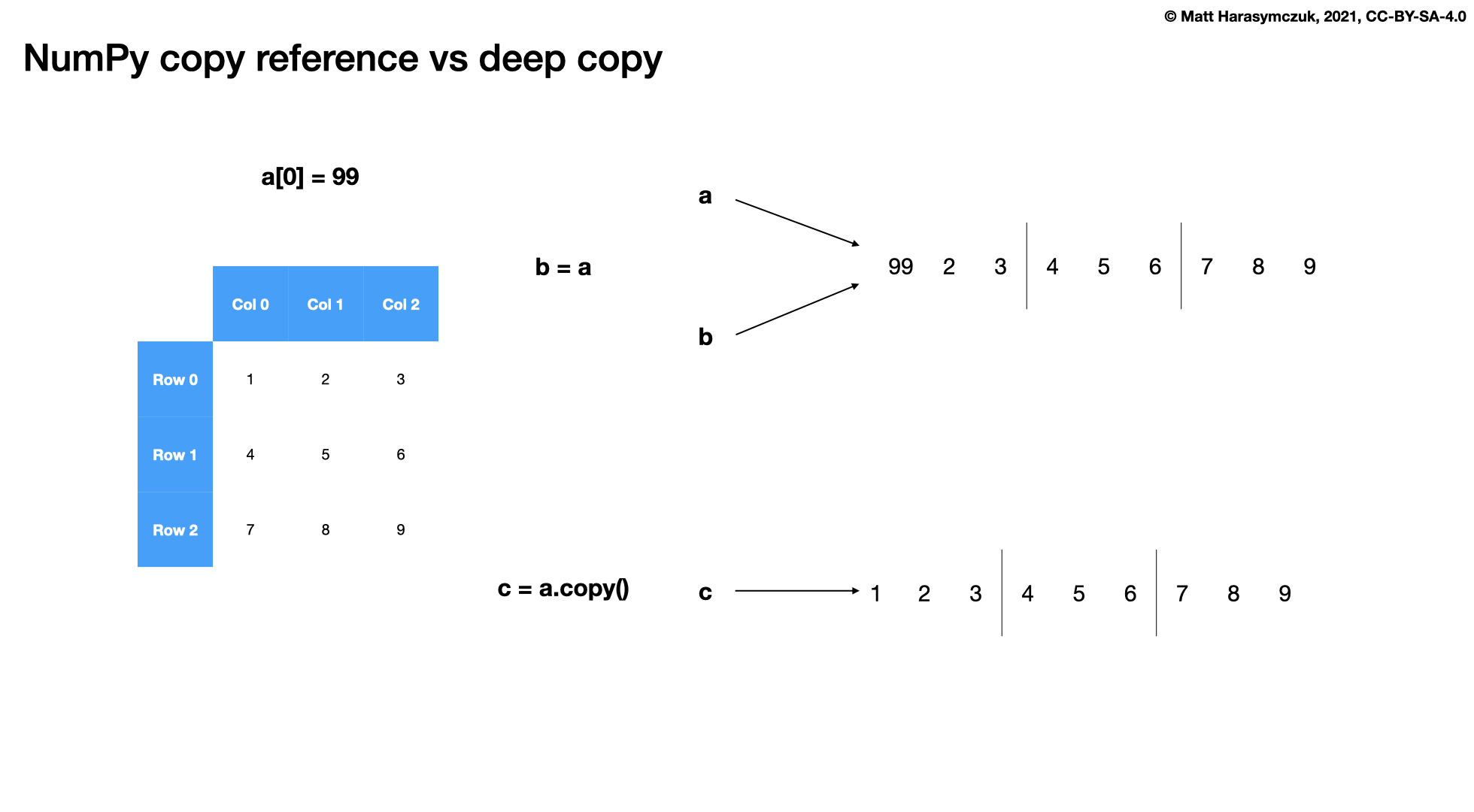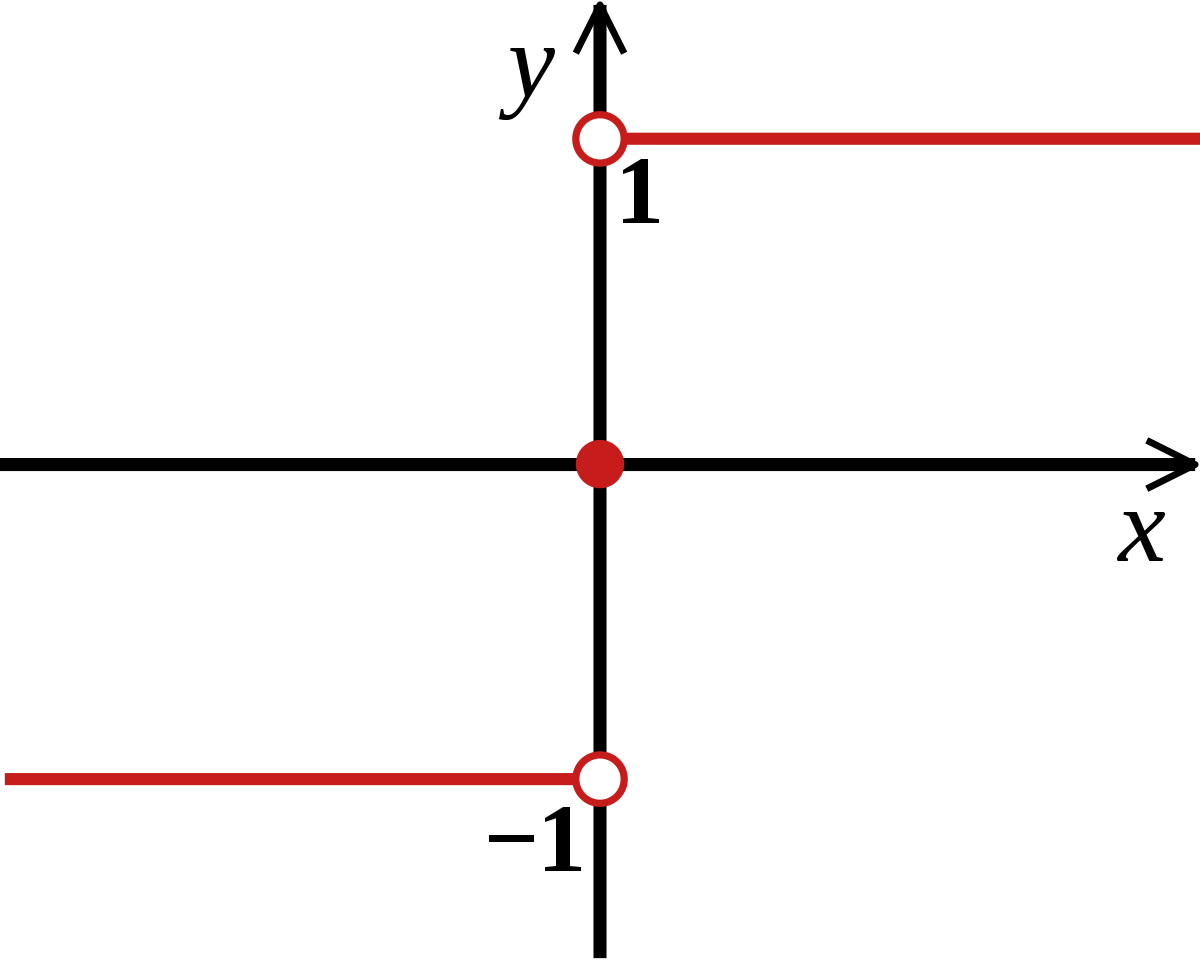8.3. Methods Methods
8.3.1. Copy
>>> import numpy as np
>>>
>>>
>>> a = np.array([1, 2, 3])
>>> b = a
>>> c = a.copy()
>>>
>>> a[0] = 99
>>>
>>> a
array([99, 2, 3])
>>>
>>> b
array([99, 2, 3])
>>>
>>> c
array([1, 2, 3])


8.3.2. Put
>>> import numpy as np
One dimensional:
>>> a = np.array([1, 2, 3, 4, 5, 6])
>>>
>>> a.put([0, 2, 5], 99)
>>> a
array([99, 2, 99, 4, 5, 99])
>>> a = np.array([1, 2, 3, 4, 5, 6])
>>> b = np.array([99, 88, 77, 66, 55, 44, 33, 22])
>>>
>>> a.put([0, 2, 5], b)
>>> a
array([99, 2, 88, 4, 5, 77])
Two dimensional:
Equivalent to
a.flat[indexes] = value
>>> a = np.array([[1, 2, 3],
... [4, 5, 6],
... [7, 8, 9]])
>>>
>>> b = np.array([99, 88, 77, 66, 55, 44, 33, 22])
>>>
>>> a.put([0, 2, 5], b)
>>> a
array([[99, 2, 88],
[ 4, 5, 77],
[ 7, 8, 9]])
8.3.3. Fill
Modifies inplace
Fill all:
>>> import numpy as np
>>>
>>>
>>> a = np.array([[1, 2, 3],
... [4, 5, 6],
... [7, 8, 9]])
>>>
>>> a.fill(0)
>>> a
array([[0, 0, 0],
[0, 0, 0],
[0, 0, 0]])
Fill slice:
>>> import numpy as np
>>>
>>>
>>> a = np.array([[1, 2, 3],
... [4, 5, 6],
... [7, 8, 9]])
>>>
>>> a[:, 0].fill(0)
>>> a
array([[0, 2, 3],
[0, 5, 6],
[0, 8, 9]])
Fill NaN (dtype=np.int64):
>>> import numpy as np
>>>
>>>
>>> a = np.array([[1, 2, 3],
... [4, 5, 6],
... [7, 8, 9]], dtype=np.int64)
>>>
>>> a[:, 0].fill(np.nan)
Traceback (most recent call last):
ValueError: cannot convert float NaN to integer
Fill NaN (dtype=np.float):
>>> import numpy as np
>>>
>>>
>>> a = np.array([[1, 2, 3],
... [4, 5, 6],
... [7, 8, 9]], dtype=np.float64)
>>>
>>> a[:, 0].fill(np.nan)
>>> a
array([[nan, 2., 3.],
[nan, 5., 6.],
[nan, 8., 9.]])
8.3.4. Transpose
a.transpose()ora.Ta.transpose()is preferred
>>> import numpy as np
>>> a = np.array([[1, 2, 3],
... [4, 5, 6]])
>>>
>>> a.transpose()
array([[1, 4],
[2, 5],
[3, 6]])
>>>
>>> a.T
array([[1, 4],
[2, 5],
[3, 6]])
>>> a = np.array([[1, 2, 3],
... [4, 5, 6],
... [7, 8, 9]])
>>>
>>> a.transpose()
array([[1, 4, 7],
[2, 5, 8],
[3, 6, 9]])
8.3.5. Signum

>>> import numpy as np
>>>
>>>
>>> a = np.array([[-2, -1, 0],
... [0, 1, 2]])
>>>
>>> np.sign(a)
array([[-1, -1, 0],
[ 0, 1, 1]])
8.3.6. Use Case - 1
t1 = 230 lux
t2 = 218 lux
t3 = 230 lux
t4 = 2 lux
t5 = 0 lux
t6 = 0 lux
t7 = 10 lux
t8 = 0 lux
>>> import numpy as np
>>>
>>>
>>> data = np.array([230, 218, 230, 2, 0, 0, 10, 0])
>>> np.sign(data)
array([1, 1, 1, 1, 0, 0, 1, 0])
>>>
>>> data[data<50] = 0
>>> np.sign(data)
array([1, 1, 1, 0, 0, 0, 0, 0])
8.3.7. Assignments
# %% About
# - Name: Numpy Methods
# - Difficulty: easy
# - Lines: 4
# - Minutes: 5
# %% License
# - Copyright 2025, Matt Harasymczuk <matt@python3.info>
# - This code can be used only for learning by humans
# - This code cannot be used for teaching others
# - This code cannot be used for teaching LLMs and AI algorithms
# - This code cannot be used in commercial or proprietary products
# - This code cannot be distributed in any form
# - This code cannot be changed in any form outside of training course
# - This code cannot have its license changed
# - If you use this code in your product, you must open-source it under GPLv2
# - Exception can be granted only by the author
# %% English
# 1. Reshape `result` to 3x4
# 2. Fill last column with zeros (0)
# 3. Transpose `result`
# 4. Convert `result` to float
# 5. Fill first row with `np.nan`
# 6. Run doctests - all must succeed
# %% Polish
# 1. Zmień kształt na 3x4
# 2. Wypełnij ostatnią kolumnę zerami (0)
# 3. Transponuj `result`
# 4. Przekonwertuj `result` do float
# 5. Wypełnij pierwszy wiersz `np.nan`
# 6. Uruchom doctesty - wszystkie muszą się powieść
# %% Doctests
"""
>>> import sys; sys.tracebacklimit = 0
>>> assert sys.version_info >= (3, 9), \
'Python has an is invalid version; expected: `3.9` or newer.'
>>> assert 'result' in globals(), \
'Variable `result` is not defined; assign result of your program to it.'
>>> assert result is not Ellipsis, \
'Variable `result` has an invalid value; assign result of your program to it.'
>>> assert type(result) is np.ndarray, \
'Variable `result` has an invalid type; expected: `np.ndarray`.'
>>> result
array([[nan, nan, nan],
[47., 9., 87.],
[64., 83., 70.],
[ 0., 0., 0.]])
"""
# %% Run
# - PyCharm: right-click in the editor and `Run Doctest in ...`
# - PyCharm: keyboard shortcut `Control + Shift + F10`
# - Terminal: `python -m doctest -f -v myfile.py`
# %% Imports
import numpy as np
# %% Types
# %% Data
DATA = np.array([[44, 47, 64, 67],
[67, 9, 83, 21],
[36, 87, 70, 88]])
# %% Result
result = ...